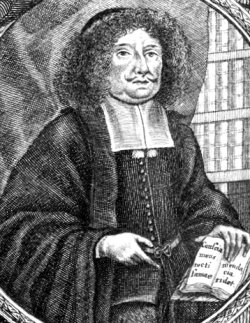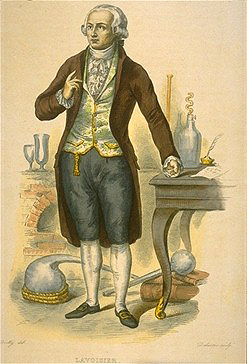What is Phlogiston and How Is It Connected to Chemistry?
In 1667, Johann Joachim Becher formulated the phlogiston theory in an attempt to explain such processes as rusting and combustion. Even though his theory was proven to be wrong by Antoine Lavoisier in 1770s, it helped to generalize a variety of chemical reactions. This was a notable step in establishing of chemistry as a science. So let’s discuss this theory and the proof of its fallacy in more details.

{by Michael Coghlan / CC BY-SA 2.0}
The History and Theory of Phlogiston
The phlogiston theory is an archaic scientific hypothesis, which stated that phlogiston, a fire-like element, is contained within things that are able to burn and is actually released during the burning process. The same applies to breathing. In fact, phlogiston means “burning up” in Greek, and the first person to mention it was German alchemist J. J. Becher in his book Physica Subterranea, where he called it “terra pinguis”. It was another German scientist George Ernst Stahl, who renamed term “terra pinguis” to “phlogiston”.

{by Sozi: Johann Joachim Becher / CC0}
According to this theory, substances that can be burned are rich in phlogiston or are said to be “phlogisticated”. In the meantime, the air has an ability to absorb only a limited amount of phlogiston. When the air becomes phlogisticated, it supports neither burning, nor breathing.

{by Marissa Anderson / CC BY 2.0}
The Fallacy of the Theory
Despite its use, the theory could not explain many phenomena. One of them was the fact that some metals, such as magnesium, gained mass instead of losing it while burning. To explain this, a number of theory proponents even argued that phlogiston has a negative mass. By the mid-18th century, it was obvious that metals gained mass when oxidized. That’s why the phlogiston started to be viewed as a principle rather than a real particle. In 1780s, a French scientist Antoine Laviosier, a father of modern chemistry, showed that burning process required oxygen, a gas having a definite mass that could be measured by weighting a closed container. As a result, Laviosier’s experiments helped to solve the mass paradox and gave a basis for the new caloric theory, which was proved to be obsolete in mid-19th century.

{by Gepsimos: Antoine Lavoisier / CC0}
Conclusion
The phlogiston theory is an outdated scientific theory that was very popular among scientists from the end of the 17th century till the end of the 18th. According to this theory, the remains of air left after burning, which are mostly a mixture of nitrogen and carbon dioxide, was a phlogisticated air. On the other hand, oxygen was referred to as de-phlogisticated air. Even though this hypothesis was wrong, it was a driving force for many experiments of that time.
Here is the funny video concerning the phlogiston theory:
See also

CASE STUDY - 8th Grade students at St Timothy's Catholic School use MEL Chemistry to enhance their science lessons
Saint Timothy Catholic School in Mesa is committed to promoting academic excellence in each child it looks after. They encourage self-discipline, self-respect, and respect for others. They understand the importance of engaging students in a comprehensive and relevant curriculum. As a result, the middle school science teacher from St. Timothy Catholic School is using MEL Chemistry subscriptions to enhance and expand their range of learning activities.

CASE STUDY - MEL Chemistry allowing pupils to reach their full potential
The Empower Learning Center is the Alternative Learning Program (ALP) within the Hinckley-Finlayson School District. They offer non-traditional education options for students ages 16-21 in their daytime program, night school for traditional high school students who need to make up credits, and night school for adults 18 and older who would like to complete their diploma or equivalency.
The school was seeking engaging, hands-on chemistry kits to make their science classes more interactive, and to help their students understand key science concepts and achieve their full potential in chemistry.

CASE STUDY - MEL Chemistry at Lund International School, Sweden
Emma Taylor, a science teacher at Lund International School (Sweden), has chosen MEL Chemistry sets as the best option for her students’ science classes. In Lund International School, all programmes are taught in English, and having chemistry sets in English are a great asset to accompany science classes.
Here, Emma shares her experience of how MEL Chemistry sets improved her students’ comprehension and understanding of science concepts.